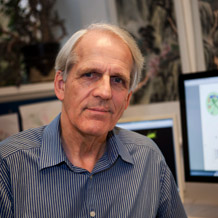Professor J Peter W Young
Emeritus
Visit Professor J Peter W Young's profile on the York Research Database to:
- See a full list of publications
- Browse activities and projects
- Explore connections, collaborators, related work and more
Profile
Career
| 1992 - | Professor of Molecular Ecology | Department of Biology, University of York |
| 1979 - 1992 | Research group leader | John Innes Institute, Norwich |
| 1978 - 1979 | SRC Postdoctoral Fellow | School of Biology, University of Sussex |
| 1975 - 1978 | NIH Postdoctoral Fellow | Department of Ecology and Evolution, State University of New York at Stony Brook |
| 1975 | PhD | University of Cambridge (Natural Sciences - Genetics) |
| 1972 | BA | University of Cambridge (Natural Sciences - Genetics) |
Research
Overview
Microbes are everywhere and their activities are vital for all “macrobes” like us. Microbes are hard to see, and hard to tell apart, but advances in our ability to study DNA have led to rapid and accelerating progress in our knowledge of microbes in the environment, including those that interact with plants, animals and fungi. In my group, we study the population genetics, molecular phylogeny and comparative genomics of rhizobia and other bacteria. We also use molecular approaches to study the ecology and diversity of mycorrhizal fungi. Bioinformatics plays an important role in teasing new understanding from the masses of data.
Discoveries
Bacterial taxonomy reflects the core genome, but ecological adaptation is conferred by an accessory genome that is partially independent of this. Bacteria do not have “second chromosomes”, but may have chromids that are derived from plasmids. The main symbionts of Mimosa species are betaproteobacteria in the genus Burkholderia. The nuclear genomes of arbuscular mycorrhizal fungi can have multiple coexisting gene versions, but the mitochondria do not.


